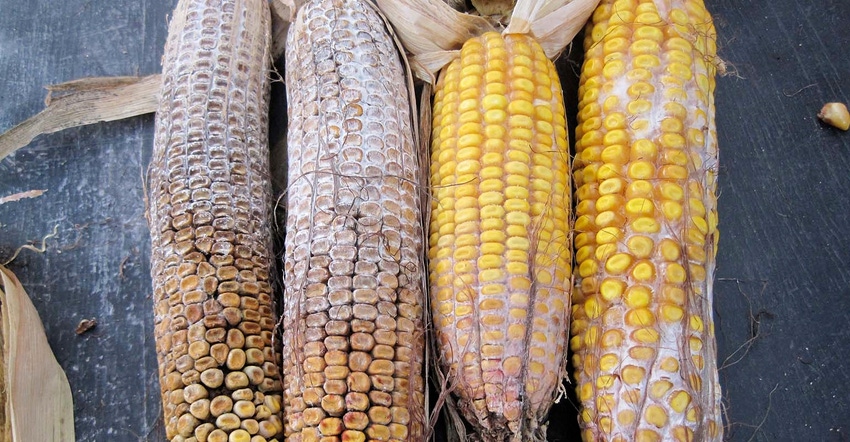January 13, 2017

Don is not a person, it’s the abbreviation for Deoxynivalenol, more commonly known as vomitoxin which is also abbreviated vom.
Whatever you prefer to call it, you don’t want it.
Vomitoxin is a mycotoxin which rears its head from time to time. Generally, it can impact corn and wheat. Extended rainy periods when the grain is formed provide prime growing conditions. Visually, grain may appear normal. Though some ear rots may be in indicator, only testing can reveal vom’s presence as it is measured in parts per million.
Livestock, particularly hogs, are most sensitive to this toxin.
The last time we had vom was 2009. It was much worse then. We thought we had found a correlation between poor grain quality and infection rates. This year, that theory has been proven false. I’m told the problem is exacerbated when corn is used for ethanol as the concentration goes up as the product is reduced and separated to ddgs. Many ethanol plants are rejecting at levels as low as 5 or 7 parts per million because the ddgs are used in feed mixtures.
So, how are we dealing?
First, we submitted a claim to crop insurance. This is one instance where the system could use some streamlining. When storing grain, it is dealt with on a bin-by-bin basis. A sample of at most, a couple pounds, is collected from the bin. That sample is then reduced to maybe a handful which is then ground. From that ground sample, a few grams are taken for the test.
In the end, a few grams may end up representing one hundred thousand bushels. It really ends up being the luck of the draw. The process is also pushed along and they want to wrap things up within 60 days or harvest. You could end up way ahead or way behind.
Once the test results are back, a reduction factor is applied to the production based on the test reading. The reduced production is entered into the worksheet and determines if you have a claim.
Equipment bought in 2009 has been dusted off. New test strips have arrived, and I have brushed up on the test procedure. We are beginning to test on our own just to better track what is coming out of the bins. This will help us blend corn to maintain acceptable levels.
We are also seeking delivery points that are indifferent to the presence of vom. It doesn’t come without a cost. We are receiving less compensation for our product than we would normally expect. However, there is no getting rejected or sweating through tests, or getting sent home.
We have also pushed up our normal delivery schedule, trying to burn through the 40% of our crop impacted by vom. We sent off final samples this week, and hope no more bins test high.
Unfortunately, there is nothing we can do to prevent future infection. It’s my understanding there are no resistant hybrids. Fungicide doesn’t help.
It’s all a hit or miss thing, thanks once again to mother nature.
The opinions of the author are not necessarily those of Farm Futures or Penton Agriculture.
About the Author(s)
You May Also Like






